



Suggested citation: Prabhu, Shravan and Vishwas Chitale. 2024. Decoding India’s Changing Monsoon Patterns: A Tehsil-level Assessment. New Delhi: Council on Energy, Environment and Water.
This study undertakes a pan-India sub-district level (tehsil-level) assessment of changing monsoon patterns during the southwest monsoon (June to September) and northeast monsoon (October to December). It delves into trends spanning the past four decades (1982–2022), with a specific emphasis on quantifying changes in rainfall patterns in the past decade. We do this climatological analysis by employing established statistical criteria and indices endorsed by the World Meteorological Organization (WMO) and the India Meteorological Department (IMD).
Recognising the micro-climatic variabilities of Indian monsoons, this study recommends development of local-level climate action plans. It aims to support local-level decision makers and administrators by providing granular information of monsoon statistics in annexure format that can be used for mapping of monsoon performance at tehsil levels.
The monsoons are crucial for the Indian economy and are often regarded as the backbone of the agricultural sector, which employs over half of India’s population. They also play a pivotal role in the management of water resources and the generation of hydro-based clean energy. However, the variability of the Indian monsoons and the associated wet and dry conditions have direct impacts on socio-economic aspects of the country, including the gross domestic product (GDP) (Gadgil and Gadgil 2006; Wang, Gadgil, and Kumar 2006; Gulati, Saini, and Jain 2013).
In 2022 alone, Asia witnessed over 81 natural hazards, with 83 per cent of them being hydro-meteorological. India, in particular, incurred significant losses, primarily due to floods caused by the monsoons (WMO 2023). While the Indian monsoons, by nature, show high variability through space and time, current climate change trends indicate that we are likely to breach global warming records earlier than expected (WMO 2023). Thus, we need to answer the crucial question of how these changes are likely to affect the variability of India’s most critical climatic phenomenon – the monsoons.
Existing literature predicts intensifying monsoon seasons with increased rainfall in core monsoon regions in both the medium term (up to 2050) and long term (up to 2100) under different representative concentration pathways (RCPs). Yet, capturing short-term granular spatial variabilities has been a challenge, especially beyond the district level. Existing assessments often focus on prolonged long-term trends at coarse resolutions and have not been able to account for intricate nuances within seasons, spanning across months and days, or even variations within a single district.
To fill this gap in enhanced analyses of short-term variabilities and to untangle the intricacies of the Indian monsoons, we conducted India’s first sub-district -level monsoon variability assessment. Sub-districts in India are known as tehsils, talukas, mandals, circles and sub-divisions. However, we refer to them as tehsils in our study to align with the prevalent usage of the nomenclature across the majority of the country for these administrative units. We answer how rainfall patterns are changing across India during the southwest and northeast monsoon in terms of inter-annual variability (year-to-year variability) and intra-annual variability (changes within months and wet and dry extremes).
For this assessment, we utilised the most recent 12-km high-resolution reanalysis data sourced from the Indian Monsoon Data Assimilation and Analysis project (IMDAA). The 12-km spatial grid covered 4419 tehsils out of 4723 tehsils as per the Survey of India shapefile obtained. Our assessment delves into trends spanning the past four decades (1982–2022), with a specific emphasis on quantifying changes in rainfall patterns in the past decade (2012–2022) during the southwest monsoon (referred to as JJAS, since it occurs from June to September) and the northeast monsoon (referred to as OND, since it occurs from October to December). We undertook a geospatial climatological analysis, employing established statistical criteria and indices endorsed by the World Meteorological Organization (WMO) and the India Meteorological Department (IMD), to accurately assess and quantify these changes.
Figure ES1 The JJAS rainfall has increased in majority of the country, but decreased over Indo-Gangetic plains, north-eastern India and Indian Himalayan region in the last decade
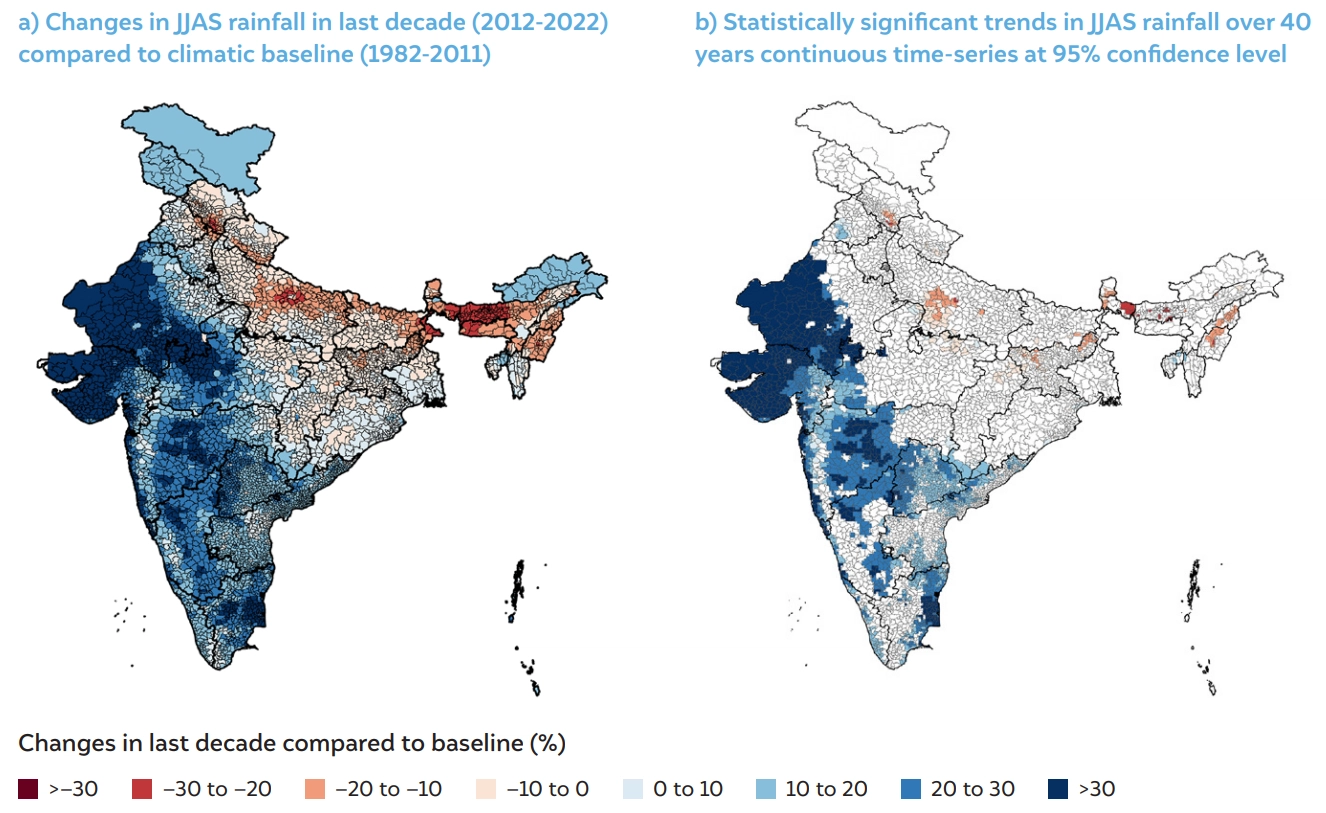
Source: Authors’ analysis
Figure ES2 Both the western and eastern coasts of India have seen an increase in OND rainfall in last decade
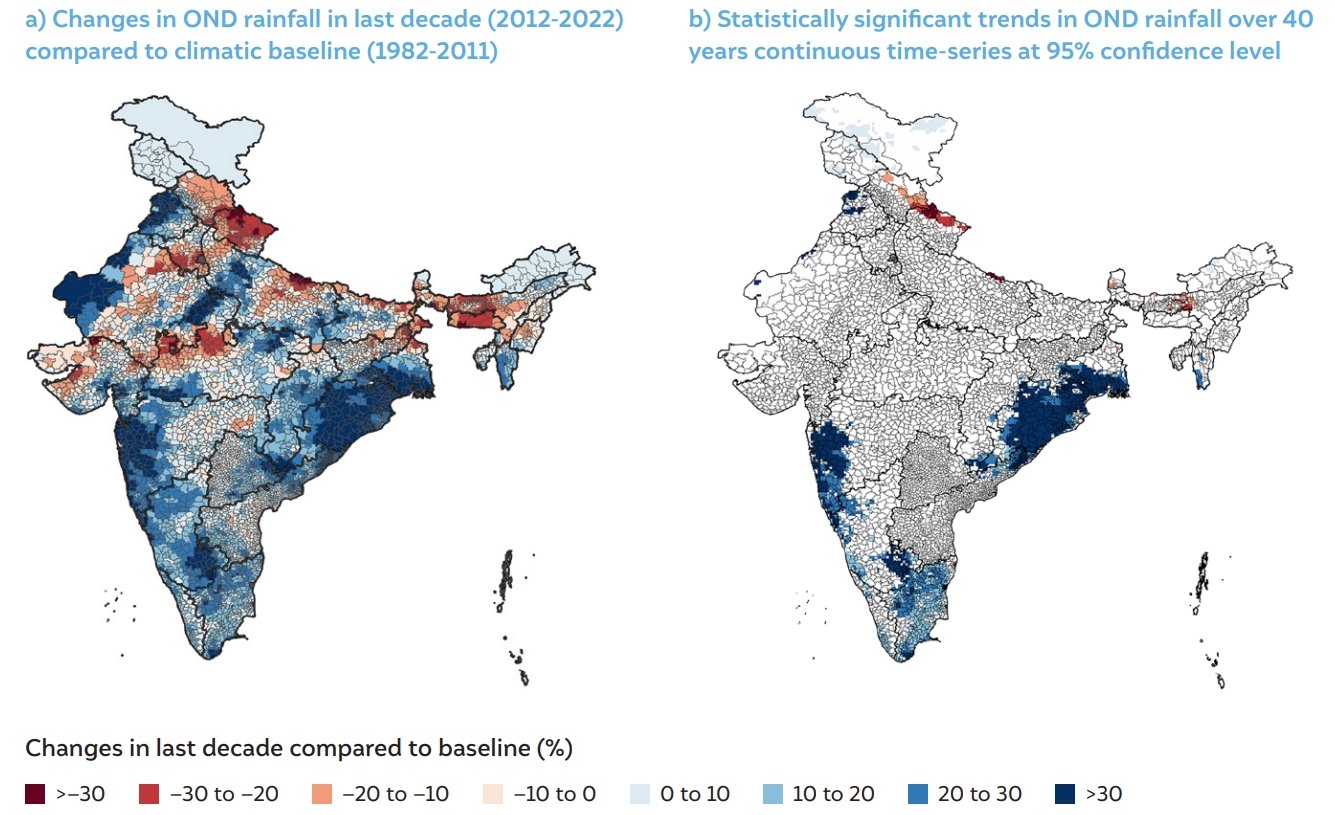
Source: Authors’ analysis
Figure ES3 Majority of India’s tehsils in the north and east zones show high variabilities in monthly rainfall
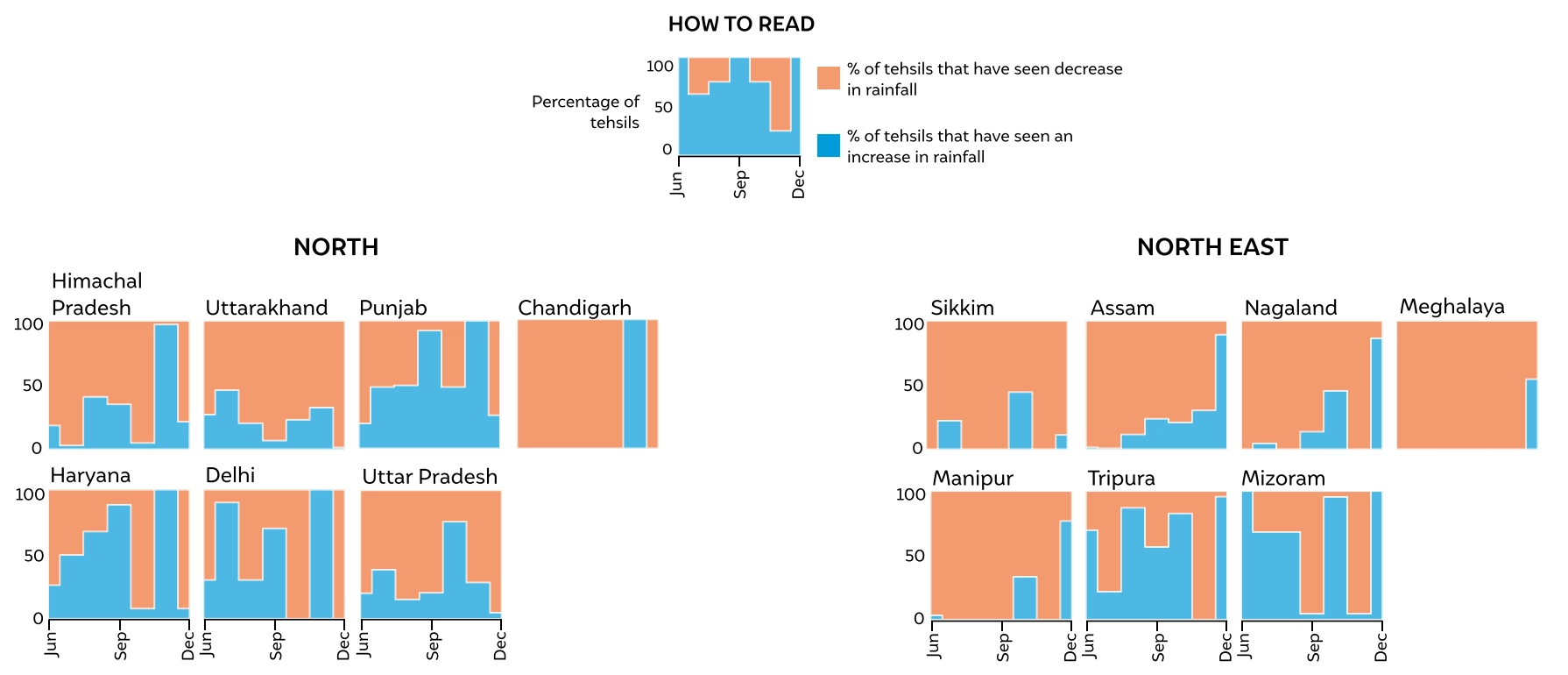


Source: Authors’ analysis
Note: The states and UTs of Jammu and Kashmir, Ladakh, Arunachal Pradesh and Lakshadweep have not been included here due to lack of availability of tehsil-level name attributes in administrative boundary shapefile.
The southwest monsoon is the primary monsoon affecting India, which occurs from June to September. Around June, the monsoon hits Kerala on southwestern coast, gradually progressing across the country. The monsoon's arrival is eagerly awaited as it marks the end of scorching summer heat, providing relief and contributing significantly to India's diverse ecosystems and economy, especially the growing of kharif crops. India is also impacted by the northeast monsoon, also known as the winter monsoon or retreating monsoon, which affects the peninsular India and occurs from October to December. This monsoon is less intense compared to its southwestern counterpart but plays a crucial role in growing rabi (winter) crops and helps recharge groundwater.
The natural variability of Indian monsoons is further influenced by climate change, as revealed in our study. Traditionally monsoon-rich regions like Northeast India, the Indo-Gangetic plains, and the Indian Himalayan region experienced a decrease in the past decade. Conversely, traditionally drier areas, including Rajasthan, Gujarat, central Maharashtra, and Tamil Nadu, witnessed an increase in southwest monsoon rainfall. The northeast monsoon intensified in Tamil Nadu, and states such as Odisha and West Bengal on the east coast, as well as Maharashtra and Goa on the west coast, observed heightened October to December rainfall.
Several factors influence the monsoon patterns in India. The primary driver is the differential heating of the land and sea. During summer, the Indian subcontinent heats up, creating low-pressure areas. Meanwhile, the surrounding oceans maintain relatively lower temperatures, creating high-pressure zones. The resulting pressure gradient triggers the southwest monsoon, drawing moist air from the Indian Ocean. Other factors include the El Niño-Southern Oscillation (ENSO), with El Niño leading to drier conditions and La Niña enhancing the monsoon. The Indian Ocean Dipole (IOD) also plays a role, impacting sea surface temperatures. Additionally, features like the Tibetan Plateau, Western Ghats, and Himalayan mountains influence wind patterns, affecting rainfall distribution across regions.
As Earth's surface temperatures rise globally, the scientific understanding is that increased evaporation leads to a rise in overall precipitation. This phenomenon is anticipated to result in increased rainfall in various regions globally due to a warming climate. Projections over India align with this trend and an increase in both southwest and northeast monsoon rainfall in the country is expected, accompanied by more heavy rainfall days. Climate change projections for India indicate a substantial 10-14 per cent rise in southwest monsoon rainfall by the close of the twenty-first century.
Adapting to the evolving monsoon patterns necessitates a comprehensive approach, integrating policy, research, and citizen science. Initially, fostering more localised decision-making is essential, emphasising the creation of district and city-level climate action plans. These plans should incorporate climate risk assessments tailored for key sectors like agriculture, water, and energy. Secondly, critical sectors must undergo a strategic reevaluation and adjustment of their approaches in response to the shifting patterns. This entails recalibrating crop cycles and disaster management calendars, to align with the dynamic nature of the changing monsoons.
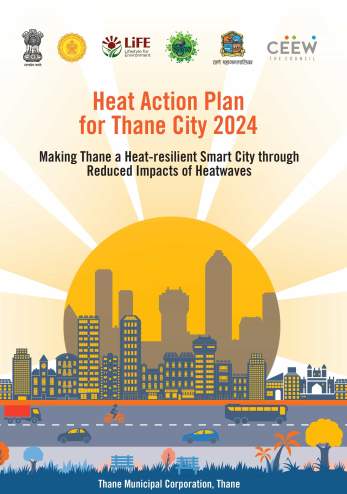
Heat Action Plan for Thane City 2024
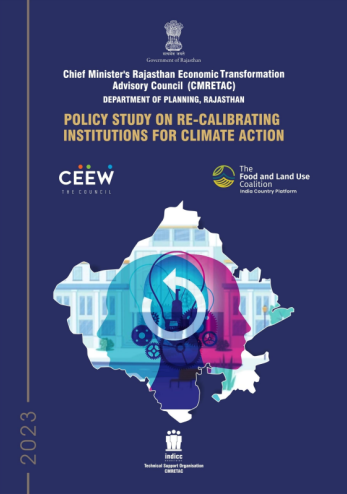
Policy Study on Re-calibrating Institutions for Climate Action
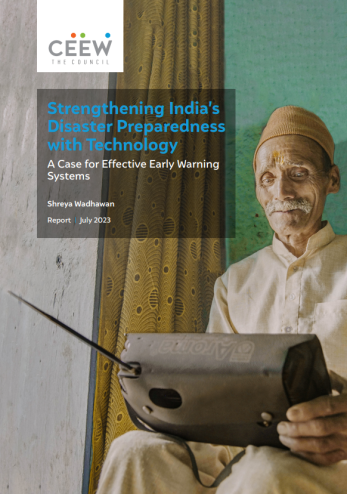
Strengthening India’s Disaster Preparedness with Technology
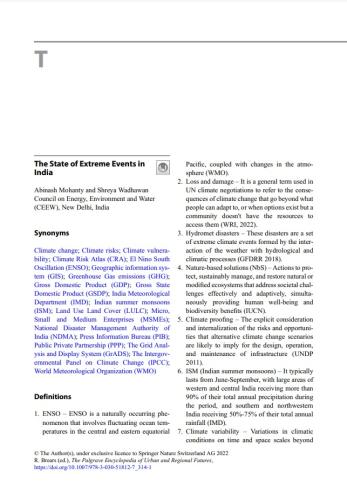
The State of Extreme Events in India